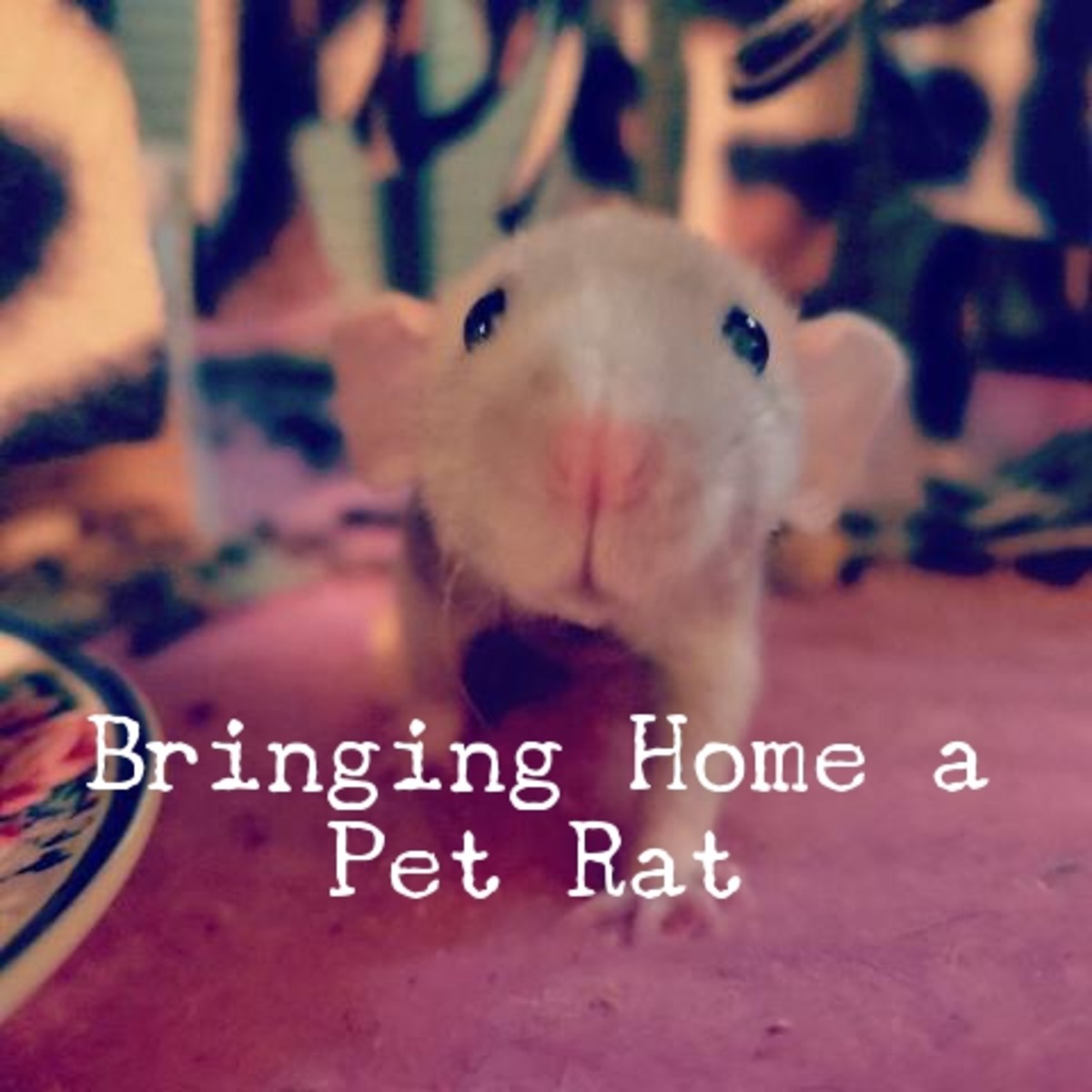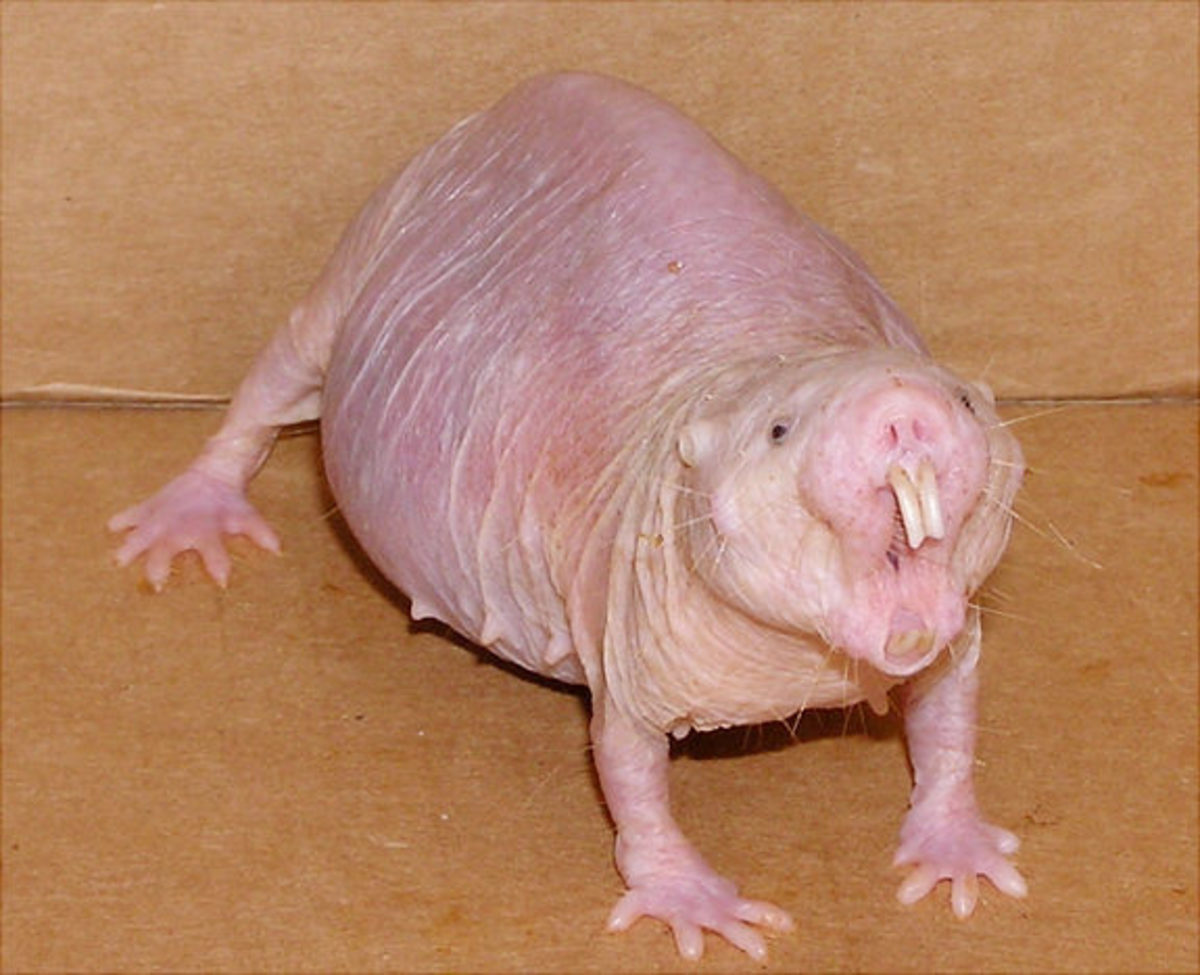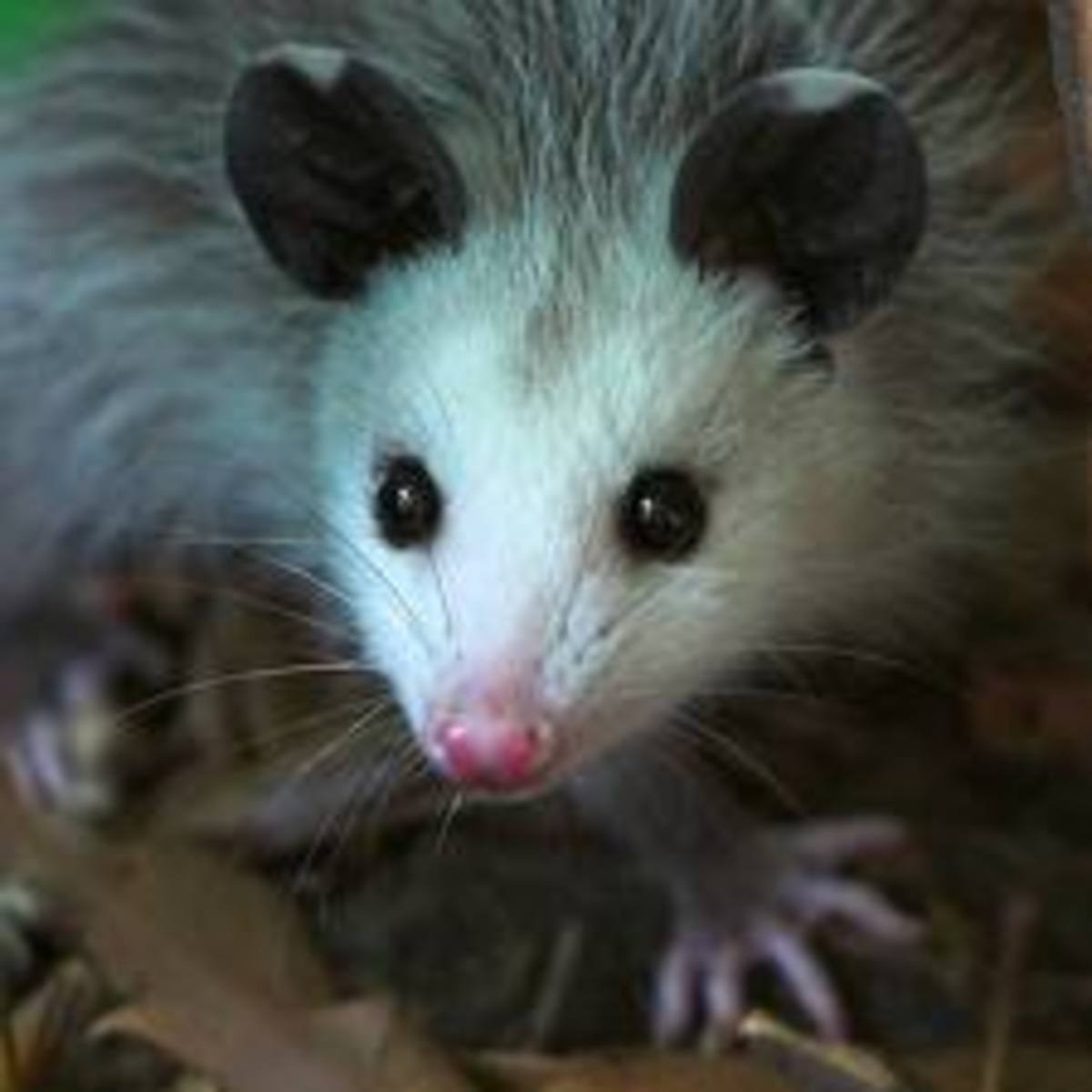Our Indoor Guinea Pigs
A few months ago I succumbed to my son's long-time wish and allowed him to become the proud owner of a guinea pig. He had been asking for one for quite some time, but I had always put it off before as I had a newborn baby and couldn't face the extra responsibility. But then the baby - his brother - started growing up and suddenly there was lots of talk of guinea pigs all over again.
To cut a long story short, we ended up with two male guinea pigs - one for each of the boys. In actual fact, keeping a lone guinea pig is detrimental to its health and happiness - they are sociable animals who are not happy when alone. Even when ours are apart for a mere few minutes, you can hear them calling to each other. There was never a question of us having only one pig. And even from the earliest discussions, we had decided that any guinea pigs we adopted would be kept indoors. This article is intended to portray our experiences keeping our new pets inside the home.

Why Did We Decide To Keep Our Guinea Pigs Indoors?
The main reason we wanted to keep our pigs indoors was so that we could bond easily with them and be around them more. We wanted them to be real family pets that we could communicate with as often as possible. It was coming up to autumn and the previous winter had been cold and harsh (although actually guinea pigs are not supposed to be kept outside all year round, but moved to a shed or indoor area when the weather is very cold). Nobody liked the idea of keep them outdoors - there are days when we barely go into the garden at all. For us it didn't seem like the best idea to keep two little animals out there. I was also a bit paranoid of the many pet cats and urban foxes that frequent the area - even though our garden is very small we have both seen and heard foxes. Of course, many people keep their guinea pigs outside securely without any problems, but we felt that indoors was right for us.
Keeping a guinea pig indoors means that you can really get to know your pet. I am finding this with our two little piggies - when we first brought them home as eight week old babies, they were very shy towards us. During our short experience as guinea pig owners, it seems that guinea pigs do often take a while to really become accustomed to being your pet. Ours have grown in confidence over the months and now they will climb onto our laps, especially if we have a little treat ready for them. When we first got them, however, they were not brave enough to do that. They still don't much liked being picked up, but they are happy to be held once they get over the initial shock of being lifted. Guinea pigs do like being cuddled, but they do not really like the sensation of leaving the ground. It simply is not natural to them.
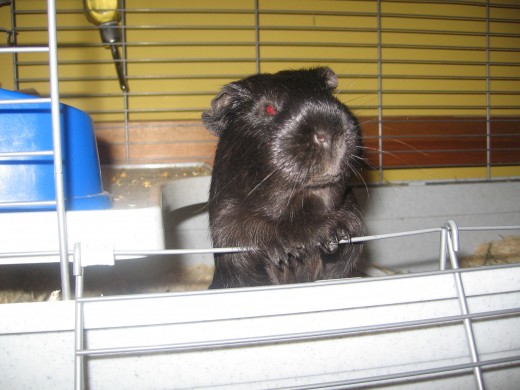
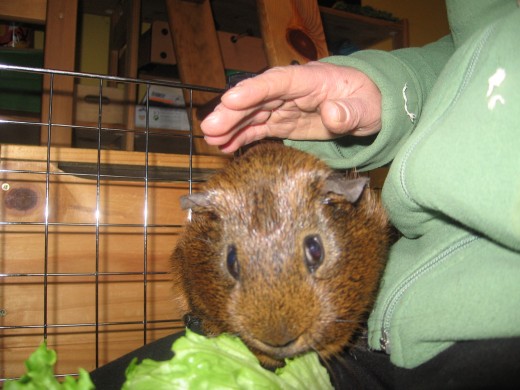
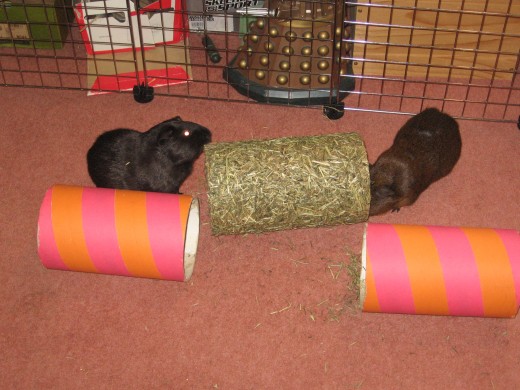
Exercise in a Run
All guinea pigs need exercise and regular access to a run. Keeping guinea pigs indoors means that most people probably won't have enough room for the type of hutch with run attached that can be purchased for the garden. An indoors set up means that you have to have somewhere that you can let your guinea pigs run around for a certain length of time each day - guinea pigs in their natural habitat can roam for around six hours per day. I try to let our two boys out for at least a couple of hours minimum, but often much longer. I have read stories of owners who let their guinea pigs roam freely around the house, but we prefer to provide a run for safety and security reasons. Free range would be out of the question as we have a cat as well, but even so I know that pigs can chew through cables, get stuck behind furniture and just generally be hard to keep an eye on. On a couple of occasions, the most feisty of our piggies has escaped from my eldest son's lap and headed behind the shelving unit, from which it was extremely difficult to coax him out!
With indoor guinea pigs, you are probably not going to want a run out all the time, as this is very space consuming. We wanted something that could be errected and then put away at the end of every day. You could, perhaps, construct your own. We ordered a metal storage cube unit from an online DIY store, which slots together in square panels and can be easily taken down (see picture for the type of unit required). It is actually fantastic - you can make it the shape and size that you choose and it is very strong and durable. I usually make it using a 4 x 3 configuration which gives the piggies ample space. We have to set it up in a room that we can shut the door on, because of the cat. Our guinea pigs get very excited and start pop-corning (something guinea pigs do when they are happy) as soon as they are put in it. They usually chase each other about for a while - guinea pigs might look like slow, lazy creatures when you see them stuck in small cages in pet stores, but actually they can run quite fast and love tearing about. We put tunnels and toys in the run, bring them some treats and leave them to it - don't forget to provide your guinea pigs with food and water if you leave them in a run as piggies need to eat and drink fairly often.
The thing about indoor cages for guinea pigs bought from pet stores is that even relatively big ones do not allow enough space for a good run around. I have noticed that when our piggies are in their cage they do not really do very much. When we first brought them home they were small babies - considerably smaller than they are right now. Then, they did run about and become very excited inside their cage. Now, however, they have grown a good deal and I would feel negligent if I did not let them out each day - I actually I believe that it is absolutely essential for their wellbeing. In fact, I have since discovered that some pet owners construct permanent cages using the metal mesh cube units, which I think is a great idea. I think this is something that I would like to have considered, had I known a bit more about it at the time. Also, cages made from metal mesh cubes do not tend to have to lids on, which I felt was essential in our situation, due to the presence of the cat. It is, however, a viable and worthy option for a new guinea owner with the right circumstances.
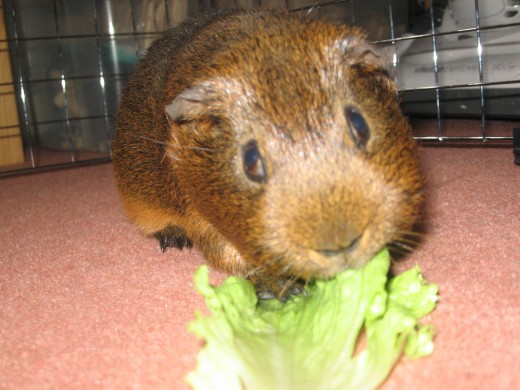
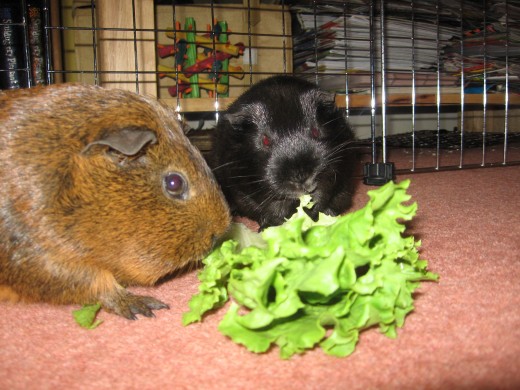
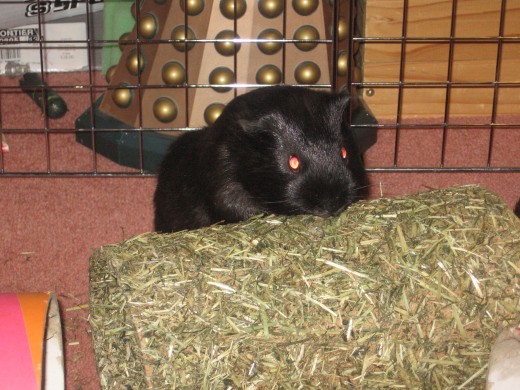
Time and Effort Involved
Guinea pigs might be wonderful, cute little animals, but they stiil need a fair amount of looking after. Although I have never owned such pets as hamsters, gerbils or rats, from my understanding guinea pigs do take more looking after. For instance, we clean the soiled bedding from our guinea pig cage every day - and these little pets do poo an awful lot, by the way. Aside from that, we clean the entire cage out every four days (about twice a week is necessary for two piggies). I remove all the bedding and clean the cage with a vinegar and water mix - I read that this was a perfectly acceptable cleaning solution, which suits me fine as I use vinegar a lot in my home cleaning anyway. Plastic indoor cages are quite easy to clean as they do not absorb urine, and it doesn't take a lot of time. Water needs changing daily, and of course they need to be fed every day. Guinea pigs should always have a supply of food available, plus access to fresh hay. We buy the timothy hay, as it is the best availble for the digestive systems of guinea pigs. Ours absolutely love it and start pop-corning when they hear the bag rustle.
Guinea pigs love food - using treats is probably one of the easiest eays to build up a relationship with your new guinea pig. Ours would take food out of our hands from very early on. Using fresh vegetables and fruit as an incentive was the way I encouraged our piggies to climb onto our laps - they simply can't resist it! Ours love red pepper, broccoli stalks, cucumber, apple and lettuce in particular, although there is a huge range of possibilities (check before giving your guinea pig vegetables and fruits - some are not suitable or safe, such as iceberg lettuce). Without tasty treats, our piggies will not yet climb all the way onto our laps, although they will still come over and put their front feet on our knees. Guinea pigs are naturally inquisitive, and the more time you spend getting to know them, the more they will give you back. For me,this just accentuates the advantages of keeping them indoors - it is so easy to just stop by for a little pet and to say hello. while you are getting on with other things.
In the run, we provide our guinea pigs with toys to play with and gnaw on. Their favoured, most played with item has to be the simple cardboard tubes. They always love chasing each other round, in and out of the tubes. After all, guinea pigs in their natural habitat like to live in caves (hence the term 'cavies'), so being inside something probably feels right at home for them. We have had other toys, such as the 'Vegetable Patch', which was a base covered with coir, with little coir carrots poking up that the guinea pigs could chew and pull out. That toy cost a whopping £10, and lasted about two weeks - the coir was chewed completely off, exposing the base with glue residue still intact. The pigs did love it, but I had to take it away. There was simply nothing left, except the glue residue, which I thought was probably not very good for them.
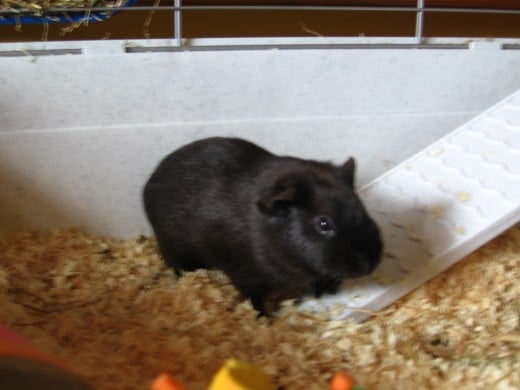
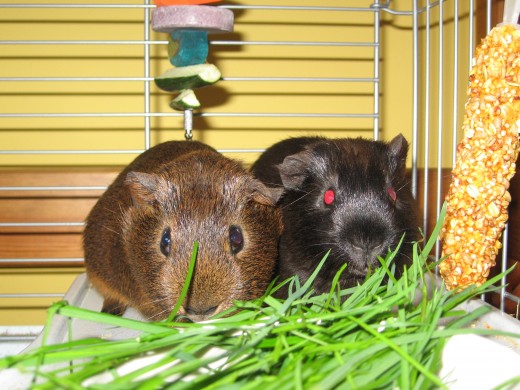
Suitability as Pets For Children
I believe that guinea pigs make excellent pets for children. Children can interact with them, more so than with many other small animals. Because guinea pigs are rather larger than hamsters, for instance, they can be picked up and cuddled - although my children don't find it that easy to pick them up yet, as they always manage to get away! They love being petted and being given treats, and they are docile animals which very rarely bite. My younger son has been bitten once, and there is no doubt about it, blood was drawn. However, his screams were so loud and piercing that it was certainly the poor guinea pig who suffered the most. Also, the bite occured because my son was feeding his piggie a piece of red pepper and didn't leave enough of the vegetable at the end for his pet to get hold off. Thus, the guinea pig mistook his finger for part of the pepper. Never mind, it was a lesson learned, and after feeling very betrayed by his pet he got over it quite quickly and forgave him. Guinea pigs do not tend to have attacking characteristics - they are vegetarian prey animals who have a lot of predators, but who do not hunt any species at all. Their instinct is to run, not fight. I think they are sweet, adorable creatures who are loved by children (the only thing that is not loved by my children is the cleaning out and practical tasks).
Our guinea pigs are called Snickers and Ginger, so-named by the children. My younger son, who was only two went he got his piggie, chose the name before we even went looking for a pet. He had his heart set on 'Ginger' because of a similarly named book about a stray cat. Luckily, we found a gorgeous piggie with a ginger tummy the first time we went looking. Even better than that, Ginger's brother was a dark brown, almost black piggie with a really cute face to whom my older son, aged ten, took an instant liking to.
I'm really pleased that we decided to choose guinea pigs as our children's pets. As a child, we only had cats, plus one dog, and so I knew little about keeping small animals. Had it not been for the children harping on about it, I doubt that I would ever have chosen to keep a guinea pig off my own back. Before we got our own, I did not realise quite how sweet and adorable they are. I'm definitely glad we gave them a go.
